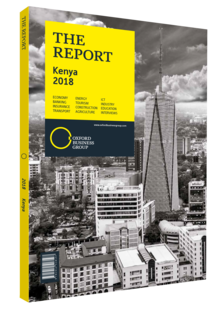Mobile options increase access to insurance in Kenya
As Kenya’s insurers respond to increasing competition by seeking new routes to premium, technology is playing a markedly important role in the market. In 2016 the Association of Kenya Insurers (AKI) remarked upon the rising popularity of so-called insurtech solutions, noting in its annual report that digitalisation is reducing customer friction points, and insurers are increasingly investing in digital platforms.
The technological environment in Kenya is an encouraging one for proponents of insurtech products and services: more than 12m smartphones are in circulation, according to the AKI, while mobile phone and internet penetration rates stand at approximately 88% and 90%, respectively. Kenyans are also keen users of social media, with 6m holding Facebook accounts, 10m actively using WhatsApp and 3m signed up to Instagram.
Some insurers have already shown a willingness to capitalise on Kenya’s widespread adoption of the smartphone to bring innovative, technology-based products to the market. For example, the Kenyan weather index cover, Kilimo Salama (Safe Agriculture), provided by UAP Insurance, uses mobile technology to offer insurance for the agriculture sector. Policies are sold by independent retailers of agricultural inputs across the country, who use scanners attached to smartphones to make instant, paperless registrations. Premium are subsequently collected by distributors and transferred to the insurance company through M-Pesa, a mobile money-transfer service which, as of June 2017, had 22.62m subscribers in the country, a year-on-year increase of 32% from 17.12m subscribers in 2016. Automated weather stations then monitor rainfall: if the weather stations’ measurement shows that there is a payout due, these are sent automatically to farmers via M-Pesa.
Growth Partners
The success of M-Pesa and other mobile money platforms pioneered by the country’s telcos has prompted banks to boost their proprietary mobile options – a trend which carries significant implications for the insurance sector. For example, the Barclays Kenya mobile app, launched in March 2018, not only allows customers to borrow up to KSh150,000 ($1470), but also offers insurance products. For insurers that aim to follow the example of banks which have teamed up with mobile network operators (MNOs) to provide access to financial services, the speed at which they do so will largely depend on pricing – particularly given the significant number of micro-insurers in the country. A survey of the regional industry undertaken by the Munich Re Foundation, the MicroInsurance Centre and the Microinsurance Network in 2015 found that one-third of micro-insurers had linked with a MNO to provide mobile services, while another one-third had made concrete plans to do so. However, of those that had not made plans to take the mobile route, the cost of the model was most frequently cited to explain their reluctance. Insurers often face a high investment cost at start-up as well as the longer-term prospect of paying commission to their MNO partner. Working out a revenue-sharing model that is beneficial to both the insurer and the MNO will be a key determinant in the expansion of mobile insurance over coming years.
Future Aims
The AKI expects technology to play a crucial role in the future growth of Kenya’s insurance industry. As part of its strategy to more than double insurance penetration to 6.5% of GDP by 2020, the body aims to promote the use of insurtech in a wide array of activities, including technology-based products such as wearables and telematics, artificial intelligence in channel development and customer service, and the development of new embedded premium distribution platforms. Other areas where Kenya might follow the global trend of insurtech include big data, which enables insurers to increase sales and boost retention through tailored products and reward programmes based on customer preferences.
You have reached the limit of premium articles you can view for free.
Choose from the options below to purchase print or digital editions of our Reports. You can also purchase a website subscription giving you unlimited access to all of our Reports online for 12 months.
If you have already purchased this Report or have a website subscription, please login to continue.

